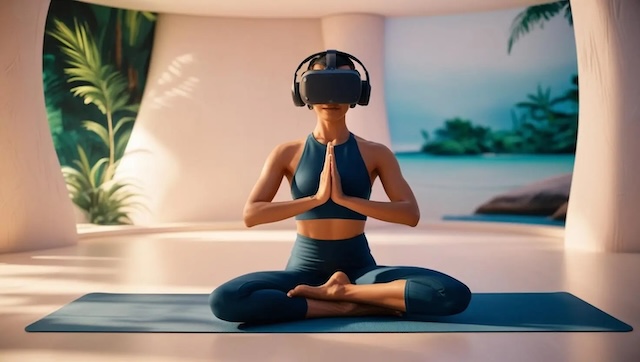If you are having trouble viewing this e-mail, click here for web version.
 |
Vrtti October 2025 - Yoga and Reality |
 |
|
Dear Yoga Friends, I happened to be listening to a podcast a few weeks ago on the topic of "deep fake" videos. As you know, these are videos that have been altered with the assistance of AI to create a scene that appears factual but isn't. For example, I could create a video of myself doing urdhva dhanurasana (upward bow, a backbend) and flipping up into handstand with legs in padmasana (lotus). Nice fantasy. This raises the question, what is reality anyway? One of the points in this podcast was that for years videos have been the gold standard for factual validation, and now they can't be trusted. Personally I don't think this is a huge deal. Before videos, facts were validated based on eye-witness testimony and other standards, and it sort of worked. What I find more intriguing is this idea of altering our perception of the world. It is unlikely you'll see me walking down the street wearing a VR headset any time soon. However, this gets one thinking that our brain and senses are pretty much the equivalent of a VR headset. They are a technology for taking in the world around us and delivering information about it to our intellect. This information may or may not be accurate, depending on how well our brain/senses "technology" is working. What does Patanjali, author of the Yoga Sutras, have to say about this? He classifies thought waves, or vrtti, into five categories: correct knowledge, illusion (wrong perception), delusion (imaginary thinking), sleep, and memory. Whether you agree with this or not, you have to appreciate the simplicity and clarity of this model. Then he dives right in to discuss correct knowledge, or pramana, in Sutra I.7 (translation from B.K.S. Iyengar's Light on the Yoga Sutras of Patanjali):
B.K.S. Iyengar elaborates: "Correct knowledge is based on three kinds of proof: direct perception, correct inference or deduction, and testimony from authoritative sacred scriptures or experienced persons." Nowhere in this do we find reference to videos or VR headsets. And as we delve further into the commentary, we begin to see some layers. We move from the layer of objective reality (if you believe in that) to a layer of senses/brain/mind, and then to a layer of buddhi, or intelligence, and (as B.K.S. Iyengar points out) its ability to discriminate. It is this intelligence and discriminative faculty that ultimately allows us to identify correct knowledge. Hard to believe that 2,500 or so years ago, someone was ahead of the game when it comes to deep fake videos. And leave it to B.K.S. Iyengar to point out that asana practice helps us develop our intelligence and discriminative faculty. Interested in your comments and reactions as always! Namaste, Chad ------------ * Weekly classes: 12:15-1:15pm Tuesdays (mixed level, online) & noon-1:30pm Thursdays (intermediate, in-person) at the Noe Valley Ministry |
|
|
